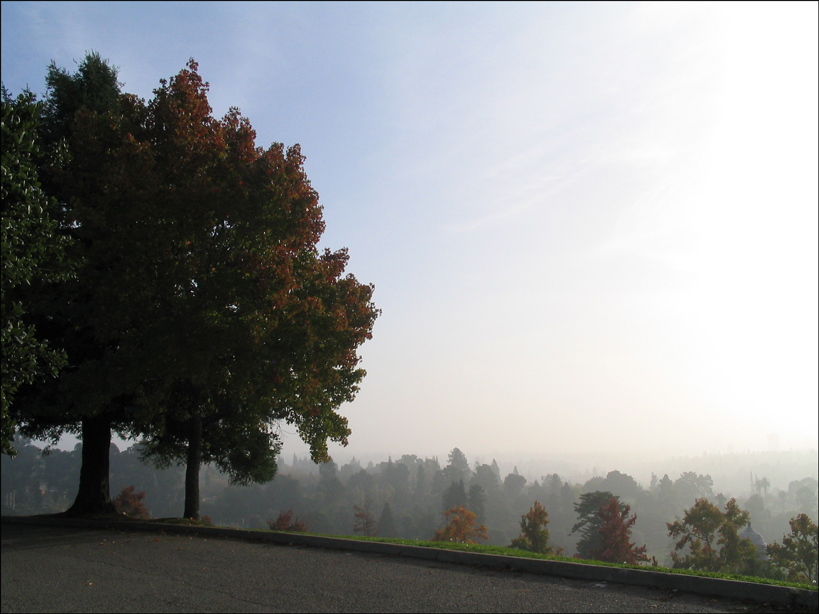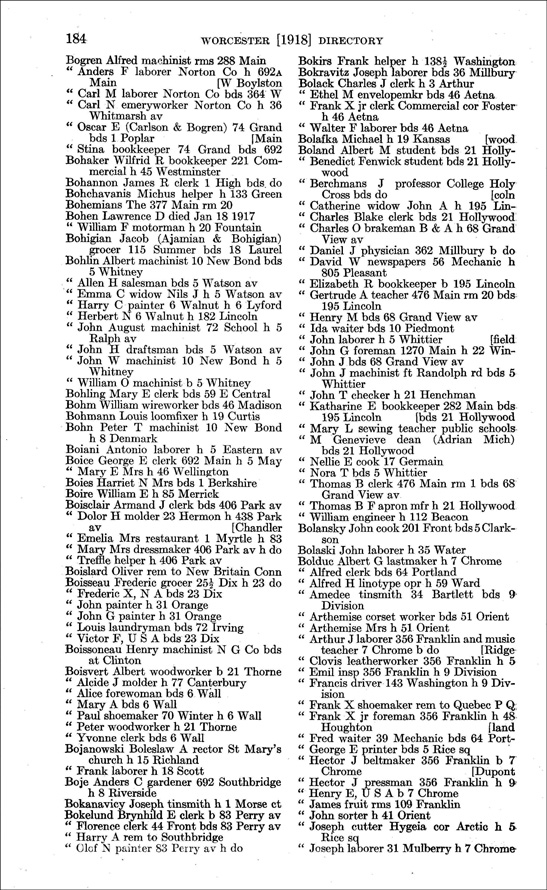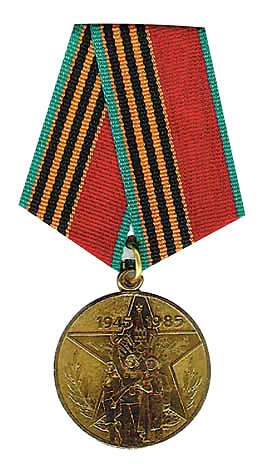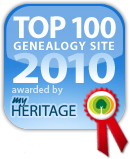At the September meeting of my local genealogy society, I brought some magazines I had received free from the FGS (Federation of Genealogical Societies) Conference held in August, in Boston for 4 days . All 4 magazines were current editions and were familiar to me, but none of which I subscribe to . Some of the club members enjoyed looking through them and even pulling out the inserts to order a subscription . Â When I got around to reading them recently, I realized how different they were from one another . The magazines were Everton’s Genealogical Helper, Family Tree Magazine, Ancestry and German Life . Â I thought I would give a little input on how the first three differ from one another.
 Everton’s Genealogical Helper, has been around for about 50 years, had over 176 pages of articles, queries and surname index . Â What I really liked was the large print, a calendar of upcoming genealogy events throughout the world, a Beginner’s Corner section, review of books, and the major topics are on the cover with page number. Â You receive 6 issues a year for $27 . This is a little less than the cost in 2000 . Â Â This is an old publication with a new editor and the Heritage Quest magazine has been combined into the Genealogical Helper. NOTE: This magazine is no longer published.
Everton’s Genealogical Helper, has been around for about 50 years, had over 176 pages of articles, queries and surname index . Â What I really liked was the large print, a calendar of upcoming genealogy events throughout the world, a Beginner’s Corner section, review of books, and the major topics are on the cover with page number. Â You receive 6 issues a year for $27 . This is a little less than the cost in 2000 . Â Â This is an old publication with a new editor and the Heritage Quest magazine has been combined into the Genealogical Helper. NOTE: This magazine is no longer published.
 Family Tree Magazine (not affiliated with Family Tree Maker software) also comes out 6 times a year for $24 . Â Their website is http://www.familytreemagazine.com . The two state research guides are nice (for Texas and Rhode Island), but at that rate, it will take years to complete this series, or maybe not, since I don’t know when the series began.
Family Tree Magazine (not affiliated with Family Tree Maker software) also comes out 6 times a year for $24 . Â Their website is http://www.familytreemagazine.com . The two state research guides are nice (for Texas and Rhode Island), but at that rate, it will take years to complete this series, or maybe not, since I don’t know when the series began.
 Ancestry Magazine was very impressive, and I will subscribe to it .  The glossy pages, nice color pictures, articles (although rather short…maybe to hold your attention), and few advertisements are the pluses . The contributors are well known in the genealogical community .  Their web site is http://www.ancestry.com and click on store tab; I had to type magazine in product box . Their price is similar to the others, 6 issues for $24.95 .  I especially enjoyed the article on the Evolution of Family History, a 10 year history .  Some interesting things that began in 1996 were: there were 100,000 websites and 14% of Americans using the internet; Ancestry.com, RootsWeb.com, FamilyTreeMaker.com and Cyndi’s List began . Other milestones during the 10 year span to date were included, now jump to 2006 where there are over 11.5 billion web pages and 77% of Americans are now online . NOTE: This magazine is no longer published.
Ancestry Magazine was very impressive, and I will subscribe to it .  The glossy pages, nice color pictures, articles (although rather short…maybe to hold your attention), and few advertisements are the pluses . The contributors are well known in the genealogical community .  Their web site is http://www.ancestry.com and click on store tab; I had to type magazine in product box . Their price is similar to the others, 6 issues for $24.95 .  I especially enjoyed the article on the Evolution of Family History, a 10 year history .  Some interesting things that began in 1996 were: there were 100,000 websites and 14% of Americans using the internet; Ancestry.com, RootsWeb.com, FamilyTreeMaker.com and Cyndi’s List began . Other milestones during the 10 year span to date were included, now jump to 2006 where there are over 11.5 billion web pages and 77% of Americans are now online . NOTE: This magazine is no longer published.
Recently, I found some old copies of three magazines (1994-2001), they were Everton’s Genealogical Helper, Heritage Quest, and Genealogical Computing. Obviously some of the articles are outdated, but some still pertain today, such as: Source Documentation: Is it Time to Change the Standards (pertaining to the internet); Genealogy Made Inexpensive; State and Federal Census articles. I wish I had seen the 7 page article about Albany, NY area Churches and Synagogue Vital Records many years ago, what a useful source that would have been for me. I also wondered what happened to a Lexington company that in 1994 made Quinsept, a “software that works for generations . The most exciting genealogical research system available.” Sure glad I didn’t buy that!
 There are now two new genealogy magazines focusing on using the internet for research . In a past newsletter, I discussed Internet Genealogy magazine http://www.internet-genealogy.com (where you can download a free copy) . My fourth issue arrived a few weeks ago . I continue to like this magazine.
There are now two new genealogy magazines focusing on using the internet for research . In a past newsletter, I discussed Internet Genealogy magazine http://www.internet-genealogy.com (where you can download a free copy) . My fourth issue arrived a few weeks ago . I continue to like this magazine.
 However, I love Digital Genealogist, a magazine that just came out. Digital Genealogist will be in PDF format, so you print what you want . They are offering a free issue, and it prints out at 42 pages . I loved the first issue of Digital Genealogist for a few reasons. First, it is very easy to read & is colorful and second, it is nice to know some of the writers personally. I see Joshua Taylor every time I go to NEHGS and Laura G. Prescott will be speaking at our club in 2007. So now you can download free issues of two different genealogy publications, or print just the pages that interest you . NOTE: This magazine is no longer published.
However, I love Digital Genealogist, a magazine that just came out. Digital Genealogist will be in PDF format, so you print what you want . They are offering a free issue, and it prints out at 42 pages . I loved the first issue of Digital Genealogist for a few reasons. First, it is very easy to read & is colorful and second, it is nice to know some of the writers personally. I see Joshua Taylor every time I go to NEHGS and Laura G. Prescott will be speaking at our club in 2007. So now you can download free issues of two different genealogy publications, or print just the pages that interest you . NOTE: This magazine is no longer published.
Many thanks to Barbara Poole for contributing her column on genealogy magazines as today’s GuestBlog!
Copyright © 2016 by Stephen J. Danko







 Everton’s Genealogical Helper, has been around for about 50 years, had over 176 pages of articles, queries and surname index . Â What I really liked was the large print, a calendar of upcoming genealogy events throughout the world, a Beginner’s Corner section, review of books, and the major topics are on the cover with page number. Â You receive 6 issues a year for $27 . This is a little less than the cost in 2000 . Â Â This is an old publication with a new editor and the Heritage Quest magazine has been combined into the Genealogical Helper. NOTE: This magazine is no longer published.
Everton’s Genealogical Helper, has been around for about 50 years, had over 176 pages of articles, queries and surname index . Â What I really liked was the large print, a calendar of upcoming genealogy events throughout the world, a Beginner’s Corner section, review of books, and the major topics are on the cover with page number. Â You receive 6 issues a year for $27 . This is a little less than the cost in 2000 . Â Â This is an old publication with a new editor and the Heritage Quest magazine has been combined into the Genealogical Helper. NOTE: This magazine is no longer published.


 However, I love Digital Genealogist, a magazine that just came out. Digital Genealogist will be in PDF format, so you print what you want . They are offering a free issue, and it prints out at 42 pages . I loved the first issue of Digital Genealogist for a few reasons. First, it is very easy to read & is colorful and second, it is nice to know some of the writers personally. I see Joshua Taylor every time I go to NEHGS and Laura G. Prescott will be speaking at our club in 2007. So now you can download free issues of two different genealogy publications, or print just the pages that interest you . NOTE: This magazine is no longer published.
However, I love Digital Genealogist, a magazine that just came out. Digital Genealogist will be in PDF format, so you print what you want . They are offering a free issue, and it prints out at 42 pages . I loved the first issue of Digital Genealogist for a few reasons. First, it is very easy to read & is colorful and second, it is nice to know some of the writers personally. I see Joshua Taylor every time I go to NEHGS and Laura G. Prescott will be speaking at our club in 2007. So now you can download free issues of two different genealogy publications, or print just the pages that interest you . NOTE: This magazine is no longer published.















